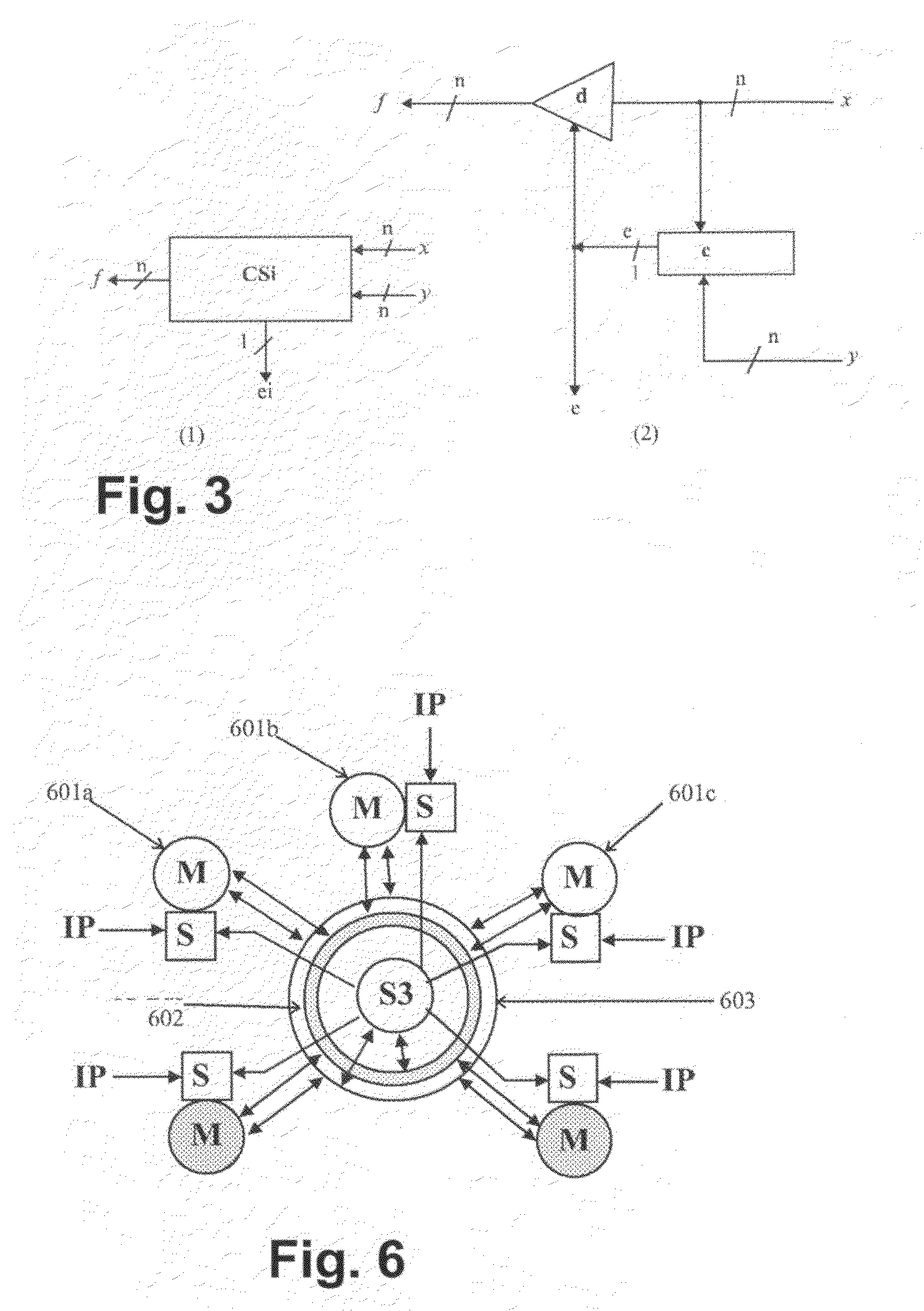Self-testing and -repairing fault-tolerance infrastructure for computer systems
a fault-tolerance infrastructure and computer system technology, applied in error detection/correction, redundancy hardware error correction, instruments, etc., can solve problems such as no absolute prevention or guarantee, and achieve the effect of enhancing reliability
- Summary
- Abstract
- Description
- Claims
- Application Information
AI Technical Summary
Benefits of technology
Problems solved by technology
Method used
Image
Examples
Embodiment Construction
1. System Elements
[0098]Preferred embodiments of the present invention provide a so-called “fault-tolerance infrastructure” (FTI) that is a system composed of four types of special-purpose controllers which will be called “nodes”. The nodes are ASICs (application-specific integrated circuits) that are controlled by hardwired sequencers or by microcode.
[0099]The preferred embodiments employ no software. The four kinds of nodes will be called:
[0100](1) A-nodes (adapter nodes);
[0101](2) M-nodes (monitor nodes);
[0102](3) D-nodes (decision nodes); and
[0103](4) S3-nodes (startup, shutdown, and survival nodes).
[0104]The purpose of the FTI is to provide protection against all five causes of system failure for a computing system that can be substantially conventional and composed of COTS components, called C-nodes (computing nodes). Merely for the sake of simplicity—and tutorial clarity in emphasizing the capabilities of the invention this document generally refers to the C-nodes as made up ...
PUM
 Login to View More
Login to View More Abstract
Description
Claims
Application Information
 Login to View More
Login to View More - R&D
- Intellectual Property
- Life Sciences
- Materials
- Tech Scout
- Unparalleled Data Quality
- Higher Quality Content
- 60% Fewer Hallucinations
Browse by: Latest US Patents, China's latest patents, Technical Efficacy Thesaurus, Application Domain, Technology Topic, Popular Technical Reports.
© 2025 PatSnap. All rights reserved.Legal|Privacy policy|Modern Slavery Act Transparency Statement|Sitemap|About US| Contact US: help@patsnap.com



